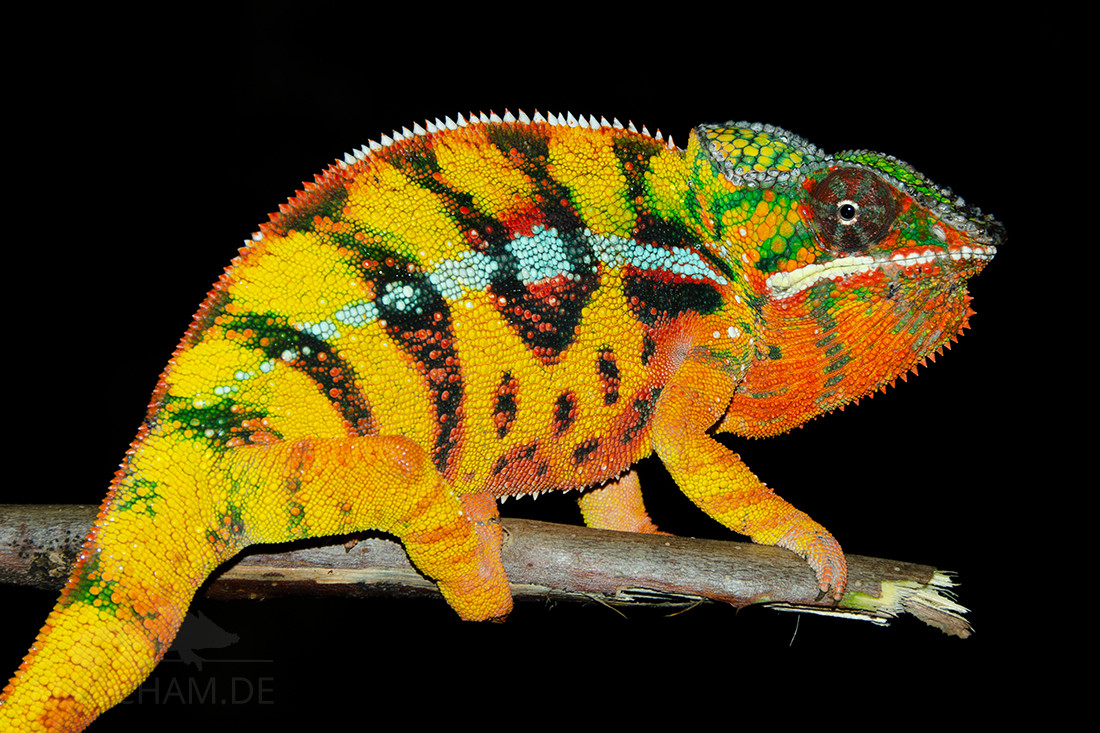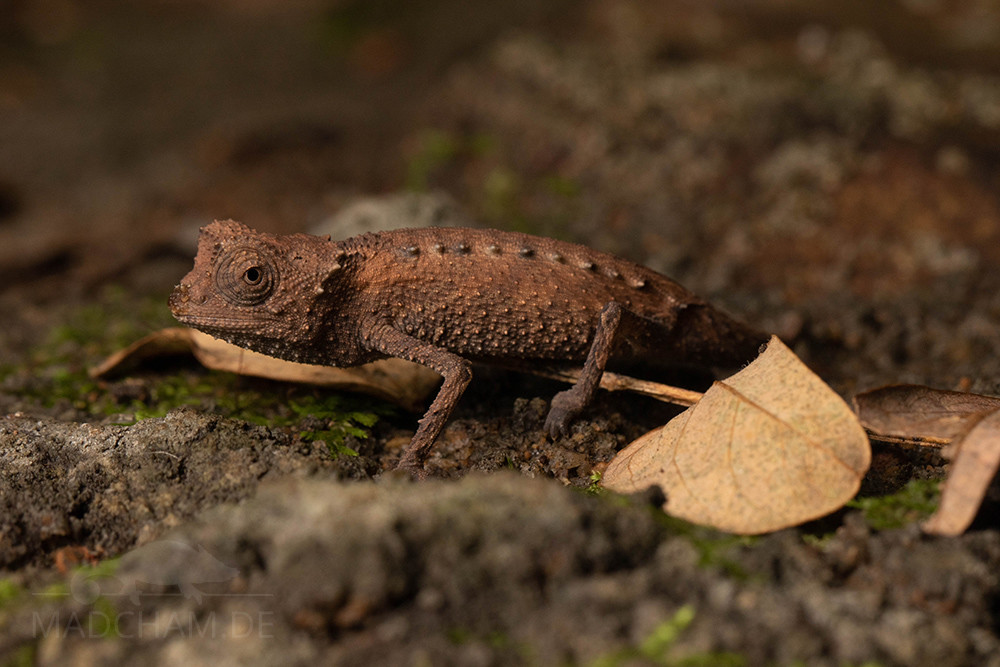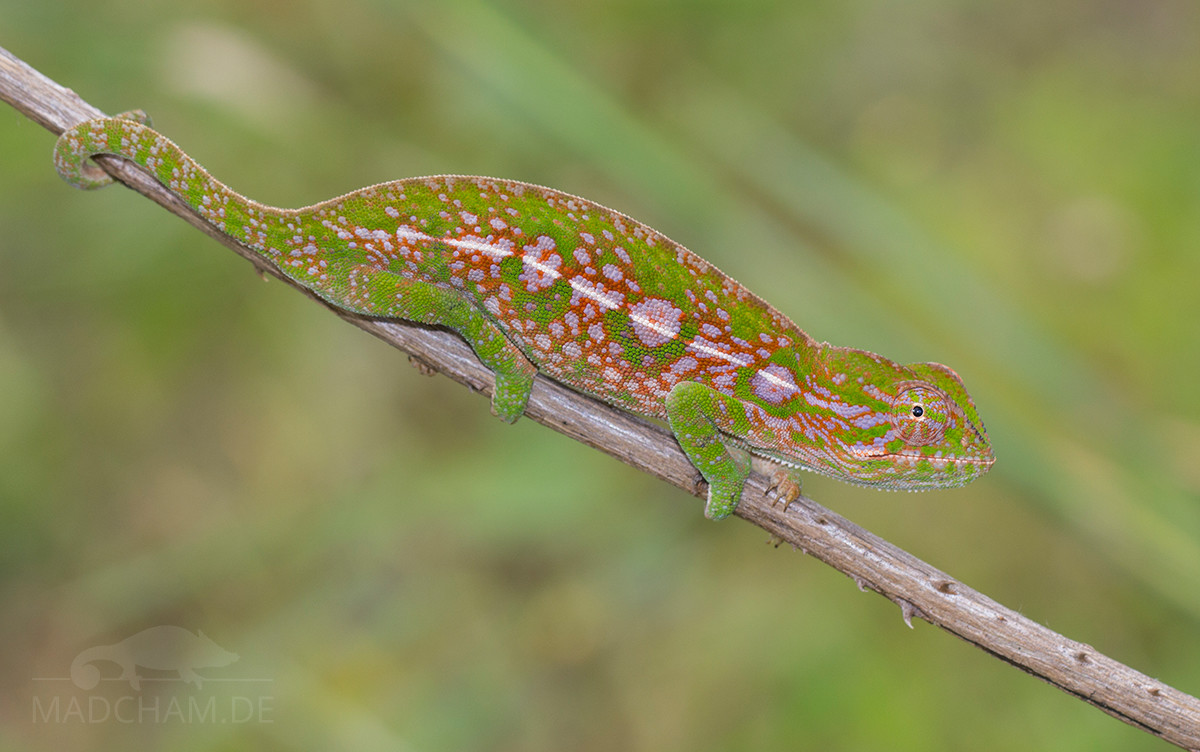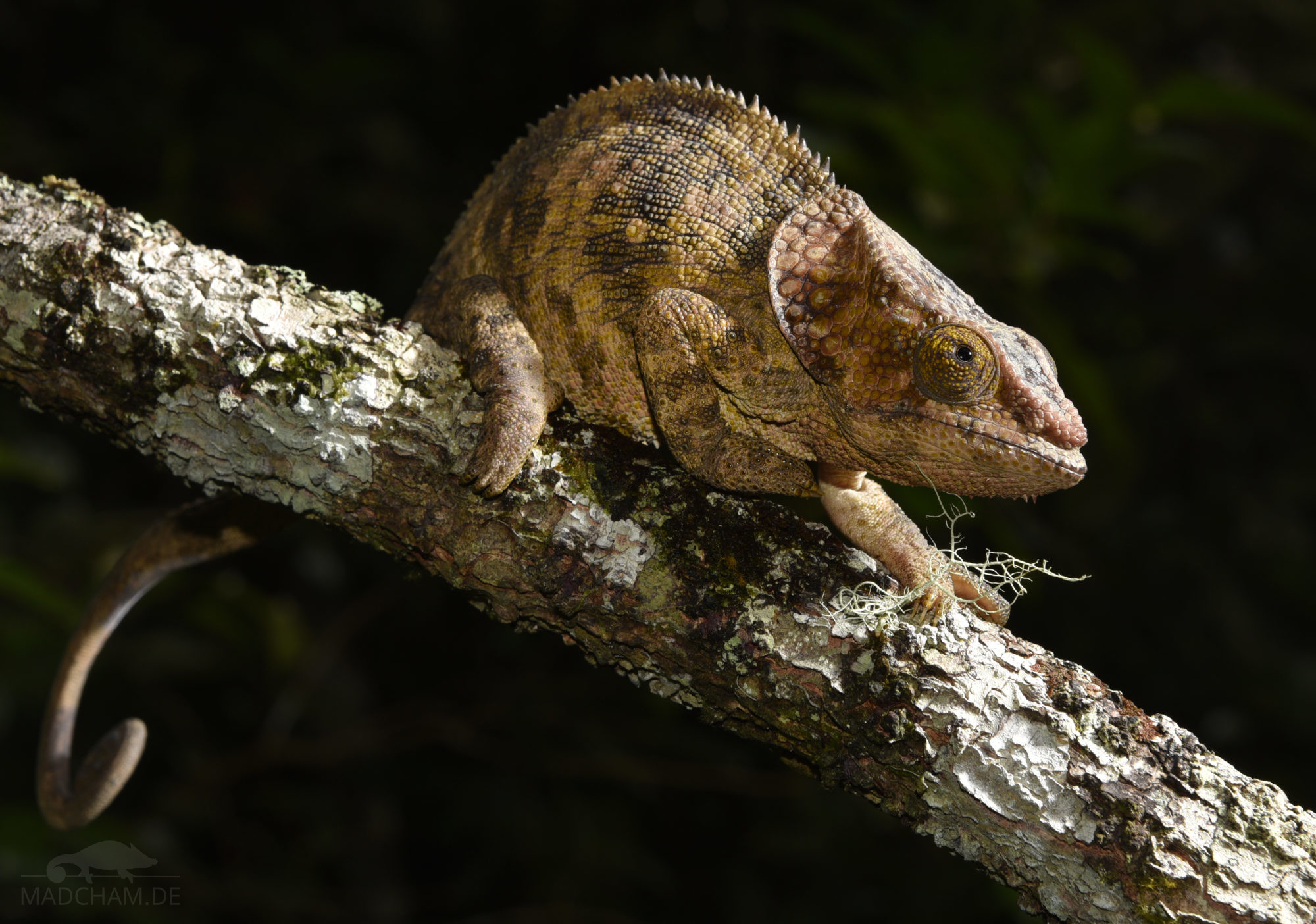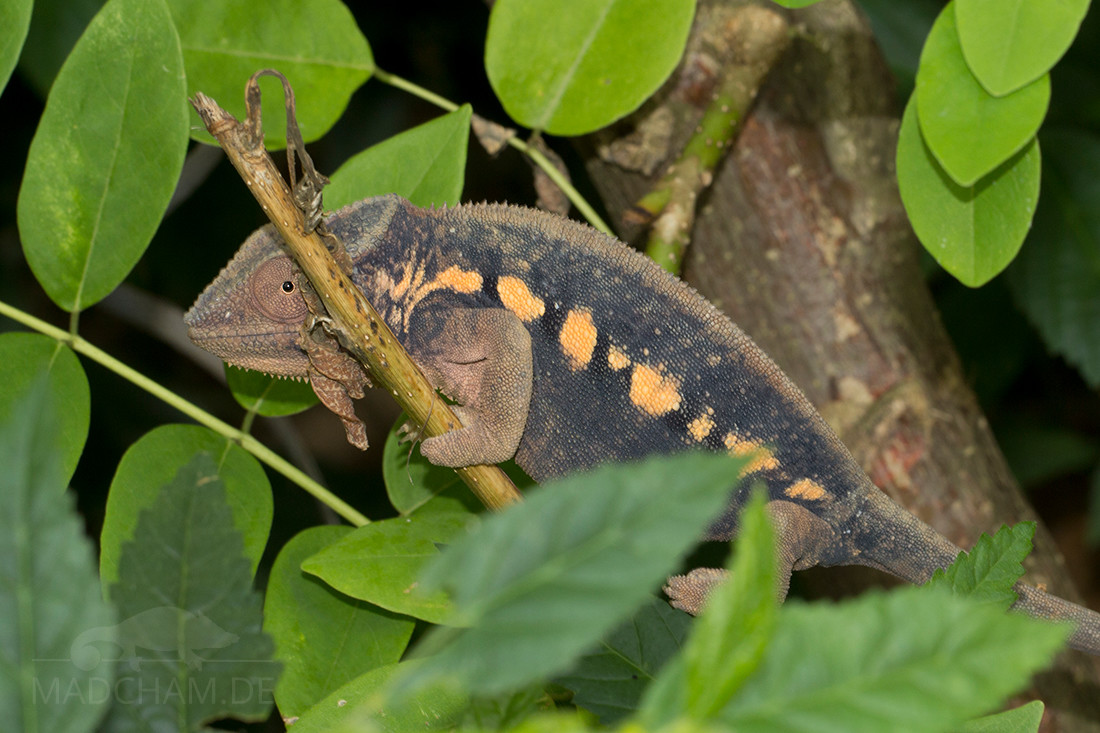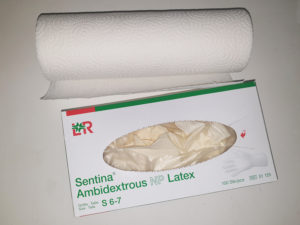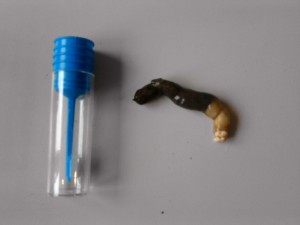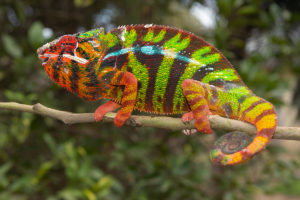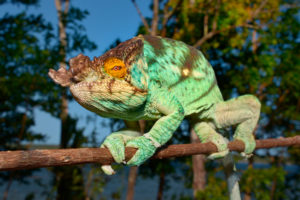Quarantine is a limited period of time during which a chameleon is kept completely isolated from other chameleons and other reptiles to protect them from contagious diseases. In the case of chameleons, these are primarily parasitoses, but now increasingly include viruses and certain mycoses. The word quarantine probably originated in French. The quarantaine de jours, or forty days, was the term used several hundred years ago for a curfew for new arrivals in ports. This was done to prevent travelers from spreading diseases.
Unfortunately, quarantine belongs to the standard at the fewest chameleon keepers but is neglected usually. Therefore, the majority of kept chameleons are infected with parasites, especially with species that are difficult to eliminate by disinfection, such as coccidia. A parasite infestation is nevertheless not part of a healthy chameleon. So if you want to build up a healthy stock, you should not renounce quarantine.
Inhaltsverzeichnis
When to do a quarantine?
Quarantine should in principle be maintained for any chameleon purchased, regardless of origin, age or condition. Wild-caught chameleons usually bring parasites and pre-existing conditions with them, which can be diagnosed and treated during quarantine. So after every import, there should be a quarantine in any case. But also captive-bred chameleons may have unnoticed unpleasant co-inhabitants in their luggage, which you don’t want to have in the finished terrarium. Even a healthy-looking chameleon should be quarantined before it is moved to its final terrarium. The quarantine can be carried out additionally with a diseased chameleon, in order to be able to treat more purposefully.
How long should a quarantine last?
For quarantine when moving in a new chameleon, four to twelve weeks in an isolated single terrarium is recommended. Many parasites need about three weeks from the infectious stage to reproduction. At least this time is needed for freshly infected animals to detect the parasites. However, since you do not find parasites in every excrement heap, you extend the period, in order to find a parasitosis as surely as possible. You do not want to overlook anything accidentally because of a too short period of time.
The duration of quarantine of one or more sick chameleons of the own stock depends on the incubation and therapy duration of the respective disease. The attending veterinarian will be able to say something about this. If necessary, you can also put a sick animal in a four-weels-quarantine and extend the duration as needed.
Advantages of quarantine
A great advantage of quarantine is that parasites can be detected and treated at an early stage. Thus, the chameleon is not placed in the final, already fully furnished terrarium until it is healthy and free of parasites. This saves the very tedious cleaning and disinfection of a terrarium already equipped with bioactive substrate and live plants. In addition, you protect the chameleon from being additionally weakened later by parasites that were undetected until then, in case of other diseases. During the quarantine also other “invisible” diseases can be discovered, for example, kidney diseases or dermatomycoses. Behavioral abnormalities can be found and examined at rest.
The most important advantage of quarantine is that it protects the existing chameleon and/or reptile population from infectious diseases. In chameleons, for example, there are obligate pathogenic (always disease-causing) fungi and quite a few parasites. In the worst case, these can reduce or even destroy entire animal populations in a short time.
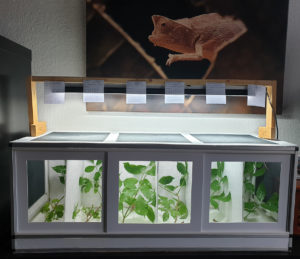
Quarantine terrariums for Brookesia stumpffi with daily changed paper towels as bottom and daily renewed branches as only furnishings
Disadvantages of quarantine
The keeping conditions under quarantine are usually not optimal for a chameleon. Low planting, sparsely furnished terrariums, and lack of privacy are disadvantages of quarantine. Overall, however, the advantages outweigh the disadvantages of quarantine.
Practical implementation of quarantine
Terrarium room
The quarantine terrarium should not be in the same room as already existing reptiles. In the best case, there are even some rooms between the room where the quarantine is performed and the rooms where reptiles are already kept. At best, a quarantine room is protected from constant disturbance, so it is not a passageway room like a hallway or living room. Carpeted flooring is also not suitable for a quarantine room due to the lack of good cleaning possibilities.
Terrarium
For a quarantine you need a well-ventilated, easy to clean terrarium. Glass tanks with modified ventilation surfaces have proven successful for chameleons. Alternatively, you can glue together an inexpensive terrarium from Styrodur, for example, which you dispose of completely after quarantine. The quarantine terrarium, if it has been used before, is thoroughly cleaned and disinfected before use. Lighting, including UV-B radiation, should be appropriate for the size of the terrarium. Under no circumstances should brightness, heat, and UV-B be omitted during quarantine!

Two glass quarantine terrariums for ground-dwelling chameleons: Daily changing sparse furnishings, kitchen paper on the floor
The furnishing of a quarantine terrarium may – in contrast to the later terrarium – be very sparse. Exchangeable branches are brought in horizontally. Newspaper or kitchen paper is suitable as an easily replaceable substrate. The paper and all branches are removed or changed daily, along with fallen droppings and urate. You unfortunately should not use plants in pots for quarantine since they may be responsible for your chameleon re-infecting itself. If sparse furniture is not enough to provide sufficient privacy for the chameleon, you can cover the sides of the terrarium with old newspapers.
Care of the chameleon
The quarantine room is always the last to be cared for in the house. Chameleons in quarantine should always have their own care utensils and food. This means, for example, that cricket boxes for feeders are used exclusively for the chameleon in quarantine and under no circumstances for other animals in the house. The same applies to spray bottles, transport boxes, feeder boxes, kitchen rolls, yogurt cups, or tweezers. Any handling near or in the terrarium is done with gloves, which are discarded before leaving the room.
Caution: Commercially available disinfectants such as Sterilium® or Sagrotan® do not kill most parasites. They are mainly effective against bacteria and only a limited range of viruses. So if you only disinfect your hands when you leave the quarantine room instead of using gloves, you can still carry parasite stages. This page has an overview of which disinfection to use for which parasite.
Examinations
During quarantine, at least two fresh fecal samples are taken to the reptile veterinarian for examination at two to three week intervals. The chameleon is observed daily for a period of time to detect any abnormal behavior or signs of disease. Feces and urate output should be regular, and both should look physiological. Food and water intake are monitored: does the chameleon immediately shoot for insects offered, or is it reluctant to go to the food? Does it drink unusually much? The skin is also observed: Are there strange spots or lumps in the skin? Does the chameleon shed its skin well or does it have problems shedding?
In older chameleons, it may be advisable to have the reptile veterinarian additionally draw blood for a check-up of organ and blood cell values. If the chameleon shows behavioral problems in quarantine or if you observe signs of diseases, you should also visit a reptile veterinarian with the animal.
Quarantine completion
The quarantine will be terminated after the above periods when fecal examinations have all been negative and the chameleon has consistently behaved inconspicuously and eaten well. In the event of illness, quarantine will not be completed until advised to do so by the attending veterinarian. After quarantine, kitchen paper, plants, and branches are removed and disposed of in the trash. Under no circumstances should they be reused in other terrariums. After that, the quarantine terrarium is cleaned and disinfected again (or disposed of as well, if you decided to use Styrodur).

